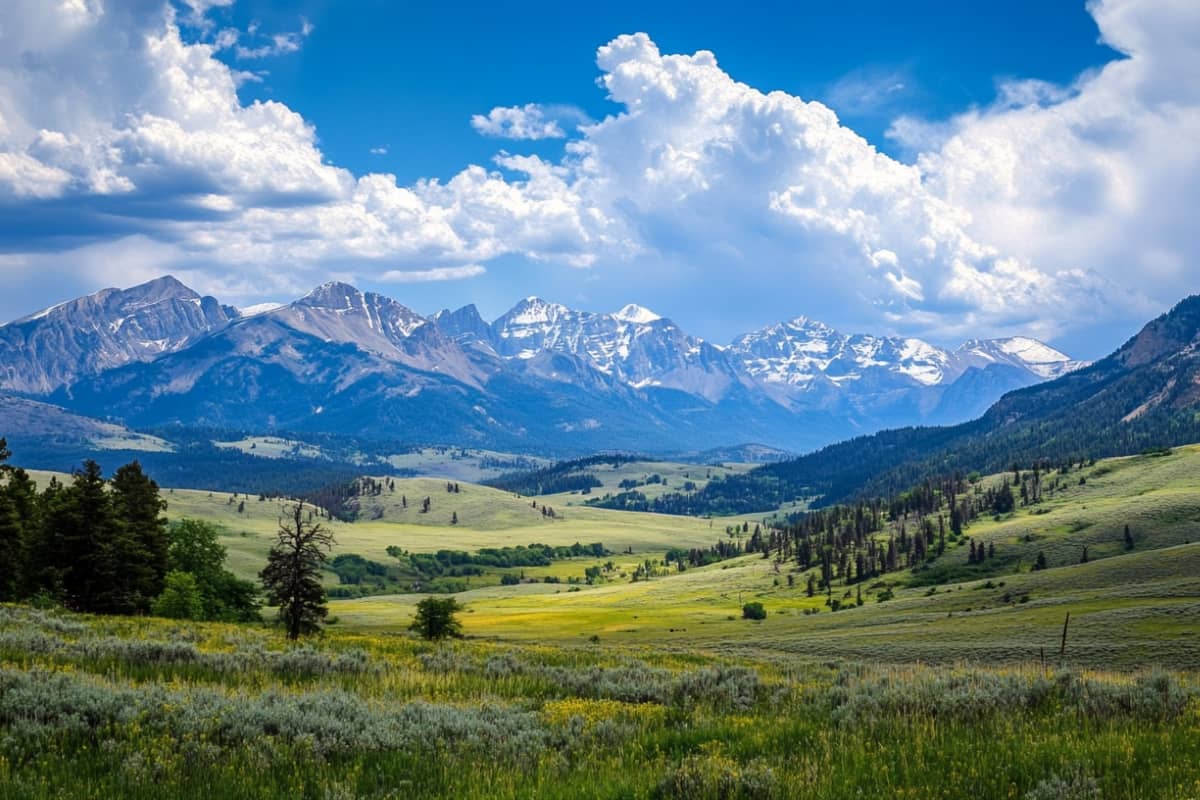The Absaroka Range, located in northwestern Wyoming and extending into Montana, is one of the most rugged and remote mountain ranges in the Greater Yellowstone Ecosystem. While the North Fork Highway offers a scenic route through this area, travelers and adventurers often overlook the hidden dangers lurking in these wild and unpredictable lands. Understanding these hazards is essential for those venturing into the region, particularly as some threats remain less obvious to the casual visitor.
1. Grizzly Bear Encounters
Grizzly bears are a significant presence in the Absaroka Range, and they pose a real danger to hikers, campers, and hunters. Bears in this area have been known to aggressively approach humans, particularly during the late summer and fall when they are feeding heavily to prepare for hibernation. The Absaroka Range has seen a steady increase in bear-human encounters in recent years, making it critical for visitors to take appropriate precautions.
Proper food storage is essential in this region. Backpackers should use bear-proof containers and ensure that all food, cooking utensils, and scented items like toothpaste are stored well away from sleeping areas. Bear spray is another vital piece of equipment that all visitors should carry, as it can deter an attacking bear.
2. Sudden Weather Changes
The Absaroka Range is notorious for sudden and extreme weather changes. Even in the middle of summer, snowstorms can sweep across the peaks, leaving hikers stranded in cold, treacherous conditions. Afternoon thunderstorms are common, bringing with them the risk of lightning strikes, which can be particularly dangerous at higher altitudes. The region’s unpredictable weather has caught many travelers off guard, leading to instances of hypothermia and other cold-related injuries.
Layered clothing is a must when venturing into the Absaroka Range. Travelers should always be prepared for rain or snow, even if the day starts with clear skies. Furthermore, it’s advisable to avoid hiking in open areas during a thunderstorm to minimize the risk of lightning.
3. Rockfall and Unstable Terrain
One of the most overlooked dangers in the Absaroka Range is the threat of rockfall. The North Fork Highway, which provides access to this region, passes through steep canyons and cliffs where rocks frequently loosen, especially after heavy rains or during freeze-thaw cycles. Hikers and climbers venturing into these areas must be aware of the potential for falling rocks, particularly in areas where the terrain is unstable or eroded.
In addition to rockfall, hikers should be cautious of loose footing on steep trails. Volcanic and sedimentary rock formations make some parts of the range prone to sudden landslides. It’s not uncommon for trails to become unstable, particularly after rain.
4. Avalanche Hazards
During the winter and early spring, the Absaroka Range becomes a prime location for avalanches. Backcountry skiers and snowshoers often underestimate the risk, particularly on the steep slopes and narrow chutes that characterize much of the region. Avalanches can strike without warning, burying anyone in their path.
Proper avalanche training and equipment are essential for those venturing into these areas in the colder months. Carrying an avalanche transceiver, probe, and shovel can mean the difference between life and death. It’s also wise to check avalanche forecasts before setting out.
5. Remote and Rugged Terrain
The Absaroka Range is vast and remote, making it easy for even experienced adventurers to become disoriented or lost. Many of the trails are poorly marked or infrequently maintained, leading to confusion, especially in bad weather. Rescue services are limited due to the ruggedness of the terrain, and in some cases, it can take hours or even days for help to arrive.
Anyone planning a trip to the Absaroka Range should ensure they have a detailed map, compass, or GPS device, as cell service is unreliable. It’s also crucial to inform someone of your intended route and estimated return time.
6. Altitude Sickness
The peaks in the Absaroka Range rise to over 12,000 feet, and the thinner air at these altitudes can cause altitude sickness in those not acclimated. Symptoms can range from mild headaches and dizziness to severe nausea and confusion. In extreme cases, altitude sickness can lead to life-threatening conditions like pulmonary or cerebral edema.
To reduce the risk of altitude sickness, hikers should allow time to acclimate by spending a few days at a lower elevation before ascending to the higher peaks. Staying hydrated and avoiding alcohol can also help. Those experiencing severe symptoms should descend to a lower altitude immediately.
7. Wildlife Hazards Beyond Bears
While grizzly bears are the most talked-about wildlife threat, other animals in the Absaroka Range also pose dangers. Moose, for example, are known for their unpredictable behavior and can become aggressive if they feel threatened. Similarly, mountain lions are native to the area, and although sightings are rare, these predators can be dangerous if approached.
Travelers should give all wildlife a wide berth, avoiding sudden movements or loud noises that could startle an animal. Carrying a whistle or noise-maker can help deter wildlife from approaching, and it’s wise to travel in groups whenever possible.
Conclusion
The Absaroka Range is a breathtaking yet perilous destination. Those who venture into this rugged landscape must be aware of the many hidden dangers, from unpredictable wildlife encounters to sudden weather changes and the risk of rockfall or avalanches. Proper preparation, awareness, and respect for the wilderness are essential for a safe journey through this stunning but treacherous part of Wyoming. Whether it’s the grizzly bears that roam the valleys or the unpredictable mountain weather, the Absaroka Range demands caution and respect from all who explore its wild beauty






